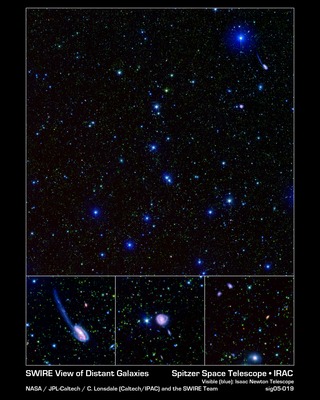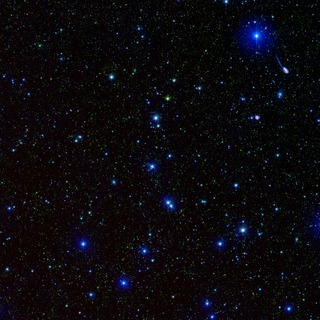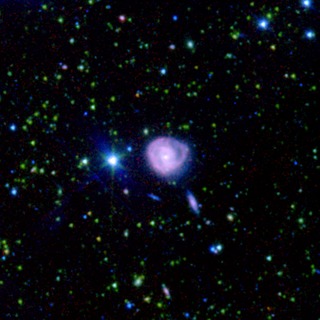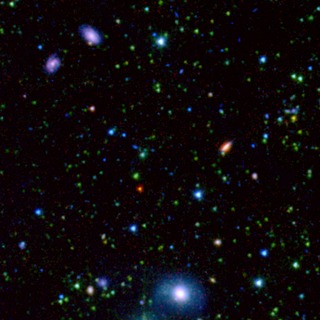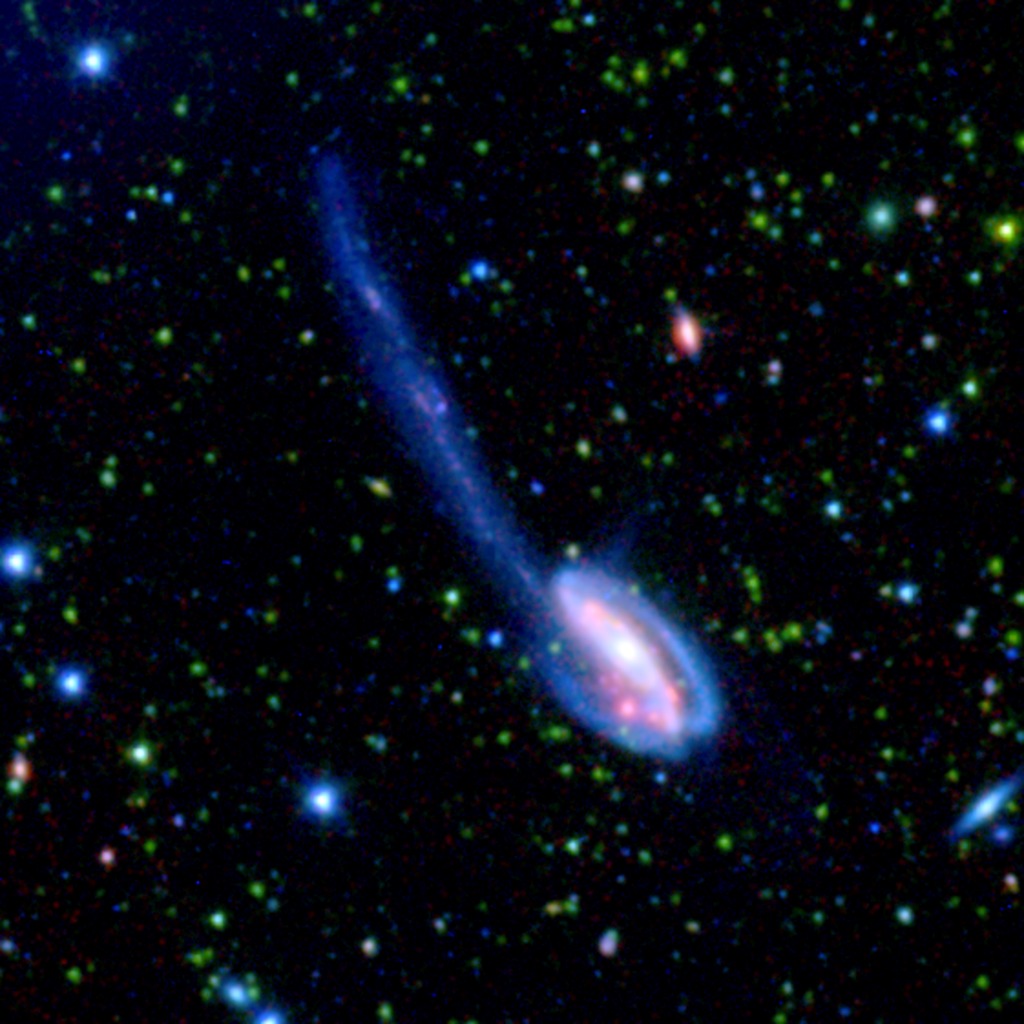
Credit: NASA/JPL-Caltech/C. Lonsdale (IPAC/Caltech) and the SWIRE Team
Observation • October 27th, 2005 • sig05-019b
sig05-019b
This spectacular infrared image of the "Tadpole" galaxy, taken by the Spitzer Wide-area Infrared Extragalactic (SWIRE) Legacy project, encapsulates one of the primary objectives of the Spitzer mission: to connect the evolution of galaxies from the distant, or early, universe to the nearby, or present day, universe.
The Tadpole galaxy is the result of a recent galactic interaction in the local universe. Although these galactic mergers are rare in the universe's recent history, astronomers believe that they were much more common in the early universe. Thus, SWIRE team members will use this detailed image of the Tadpole galaxy to help understand the nature of the "faint red-orange specks" of the early universe.
The observed SWIRE fields were chosen on the basis of being "empty" or as free as possible from the obscuring dust, gas, and stars of our own Milky Way. Because Earth is located within the Milky Way galaxy, there is always a screen of Milky Way objects blocking our view of the rest of the universe. In some places, our view of the larger universe is less obscured than others and for the most part is considered "empty." These are prime observing spots for astronomers interested in studying objects beyond the Milky Way.
ELAIS-N1 is only one of six SWIRE survey fields. The full survey covers 49 square degrees of the sky, equivalent to the area covered by about 250 full moons.
The SWIRE image is a 3-channel color composite, where blue represents visible green light (light that would appear to be blue/green to the human eye), green captures 3.6 microns, and red represents emissions at 8 microns.
About the Object
- Name
- Tadpole Galaxy • Arp 188 • UGC 10214
- Type
- Galaxy > Type > Interacting
- Distance
- 425,000,000 Light Years
- Redshift
- 0.031358
Color Mapping
| Band | Wavelength | Telescope |
| Optical | 550 nm | |
| Infrared | 3.6 µm | Spitzer IRAC |
| Infrared | 8.0 µm | Spitzer IRAC |
Astrometrics
- Position (J2000)
- RA =16h 6m 9.2s
- Dec = 55° 28' 9.8"
- Field of View
- 5.6 x 5.6 arcminutes
- Orientation
- North is 44.1° right of vertical
